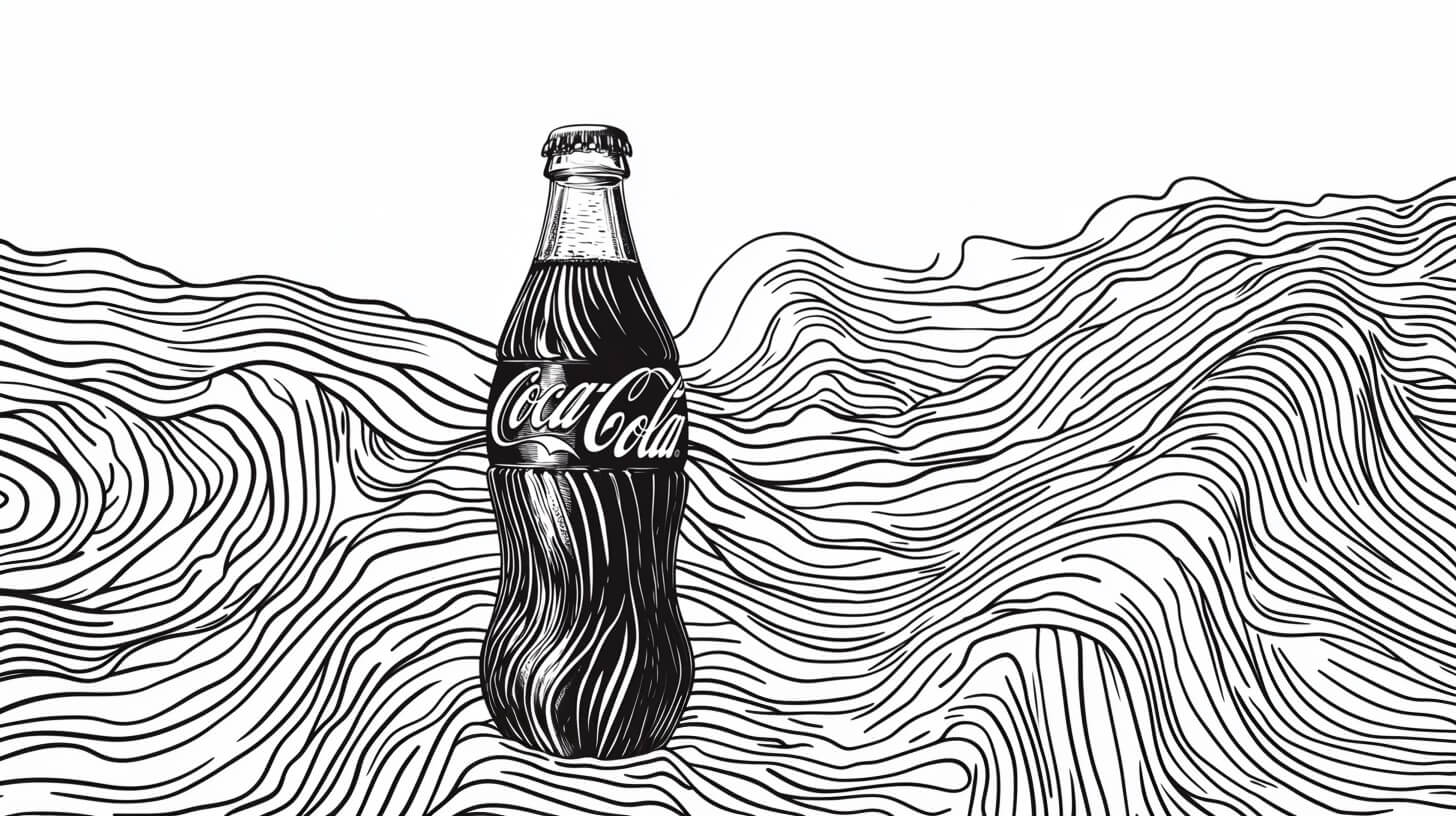How does a brand maintain its relevance for over a century while staying true to its core promise? Since 1886, Coca-Cola has mastered the art of sustaining its brand position by focusing on a single, powerful benefit—refreshment—while continually adapting how this benefit speaks to each new generation.
This is no small feat. As society evolved from Victorian-era pharmacies to modern digital culture, Coca-Cola has kept refreshment meaningful and relevant. During the Great Depression, refreshment meant an affordable moment of joy. For World War II soldiers, it represented a taste of home. In the 1960s, it became part of youth culture’s energy and optimism. Today, it connects to sustainability and social purpose.
Through examining Coca-Cola’s journey across different eras, there are some valuable lessons to uncover about maintaining brand relevance. It’s less about chasing trends or reinventing things. Instead, it’s about understanding your core brand benefit, staying true to your positioning, and finding authentic ways to make that matter to audiences. Let’s explore how Coca-Cola has sustained its position as the world’s most refreshing drink, one generation at a time.
Early Days (Late 1880s)
When Dr. John Pemberton introduced Coca-Cola in 1886, he positioned it as both a medicinal tonic and a refreshing drink. While advertisements called it an “Intellectual Beverage” and “Temperance Drink,” highlighting its therapeutic benefits, the word “refreshing” appeared consistently in early marketing. This dual positioning—health benefits and refreshment—helped the brand establish itself in an era fascinated with medicinal elixirs.
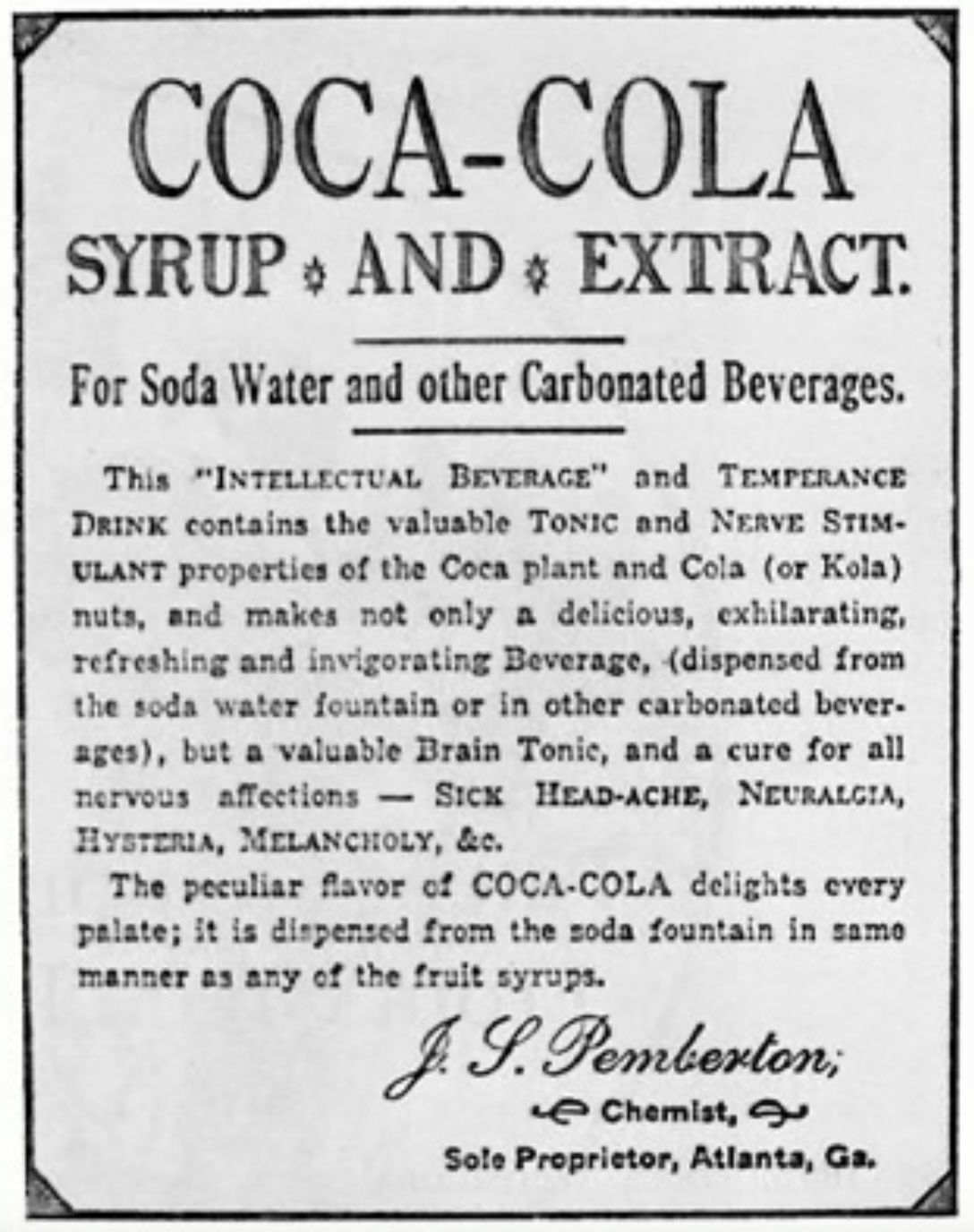
Early promotions claimed that its coca plant and kola nut extracts provided mental clarity, and vitality. The drink was advertised as a cure for headaches, hysteria, and melancholy. These claims resonated with a workforce facing long hours in factories and offices, where exhaustion and stress were common.
However, as medicine regulations tightened and consumer expectations shifted, Coca-Cola began transitioning away from its medicinal identity toward a universal drink. This shift would define the brand, allowing Coca-Cola to move from pharmacy counters to a mainstream beverage.
1900s-1920s: A Drink for Everyone
The first decades of the 20th century transformed Coca-Cola from a local tonic into America’s favorite soft drink. As the nation embraced mass production, new forms of entertainment, and increased mobility, Coca-Cola adapted its promise of refreshment. The brand’s journey from soda fountains to portable bottles mirrors America’s evolution into a modern consumer society.
1900s: Delicious and Refreshing
By the early 1900s, Coca-Cola recognized that Americans’ relationship with beverages was changing. The slogan “Delicious and Refreshing” marked a crucial evolution in the brand’s position. A major shift away from its medicinal roots. The company began speaking to a broader audience seeking simple pleasures. This natural evolution reflected the changing tastes of the American people.
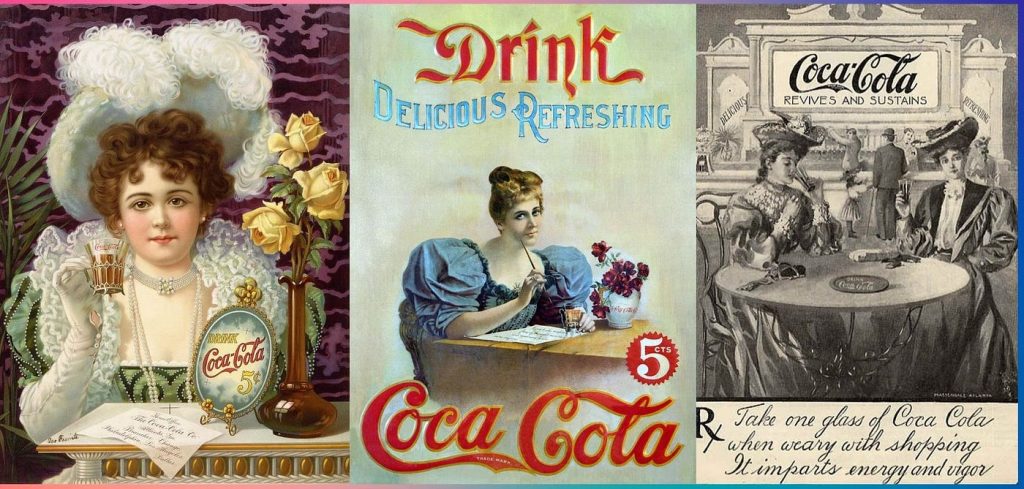
As Americans were embracing small indulgences in their daily lives, Coca-Cola positioned itself as a moment of refreshment that anyone could enjoy, anywhere.
This early transition established a pattern for how Coca-Cola would sustain its brand position through the decades. While the core promise of refreshment remained constant, how people experienced and valued Coca-Cola evolved. By adapting its message from health benefits to pure enjoyment, Coca-Cola created a position strong enough to resonate with everyone and every generation that followed.
1910s: Portable Refreshment
In the early 1910s, Coca-Cola delivered its product via one specific channel: the soda fountain. These spaces became social hubs where servers would pour “delicious” and “cooling” Coca-Cola for 5¢. The “Whenever you see an Arrow” slogan made these fountains destinations for Americans seeking a break.
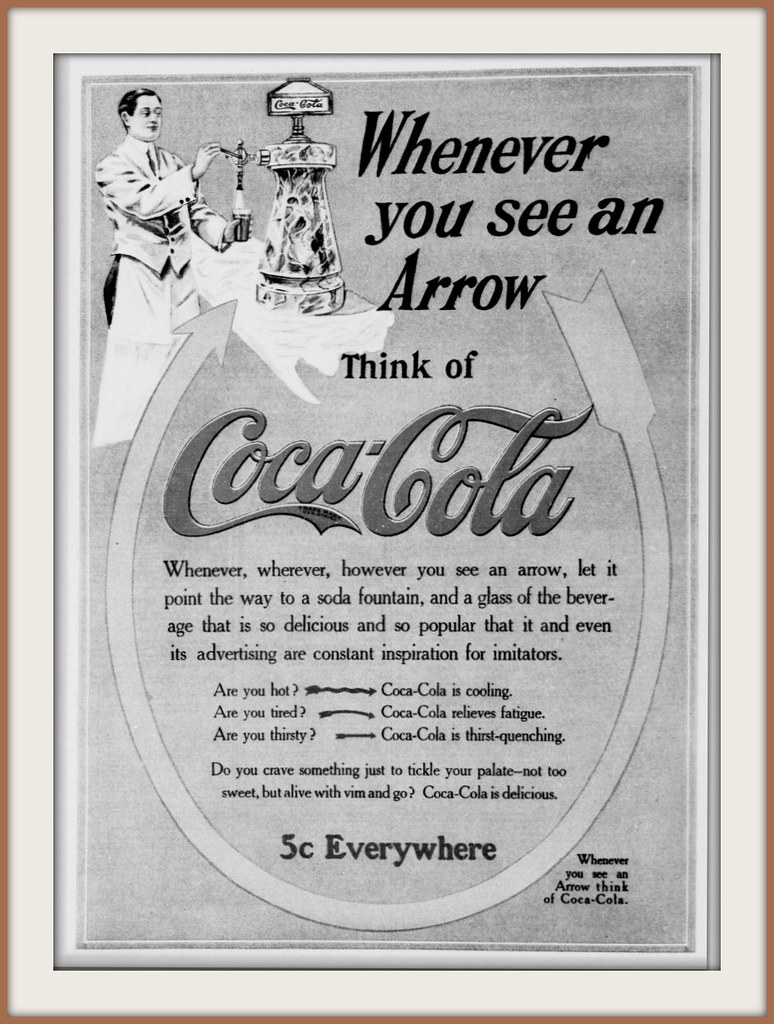
But Coca-Cola soon recognized that people’s habits were changing and there was an opportunity to make Coke available in a portable way. Hoping to expand the drink’s reach, Coca-Cola sought to bottle it for drinkers to enjoy beyond the confines of traditional soda fountains.
The company challenged glass makers to create a “bottle so distinct that you would recognize if by feel in the dark or lying broken on the ground.” This marked a major shift in how people could enjoy Coca-Cola and, in 1915, the distinct contour bottle was born.
The innovative design gave Coca-Cola’s promise a portable form. It also created a unique product identity that differentiated Coke from the many bootleg imitators that were illegally operating at this time.
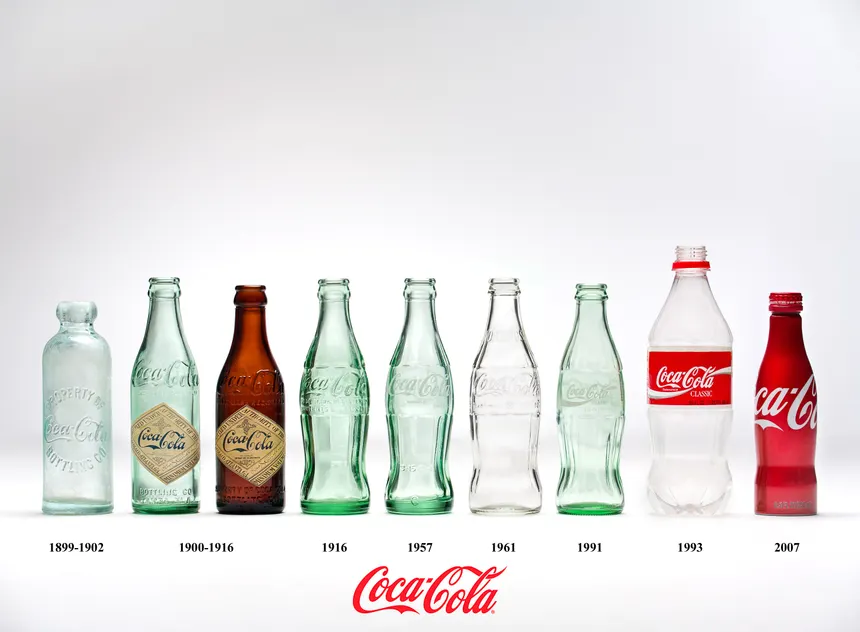
As bottled drinks gained popularity, Coca-Cola’s advertising evolved to showcase the diamond label and later the contour bottle. Yet the message remained unchanged whether from a fountain or bottle, coke was delicious and refreshing. By 1917, the “Three million a day” campaign celebrated how many Americans were enjoying Coke, no matter how it was served.
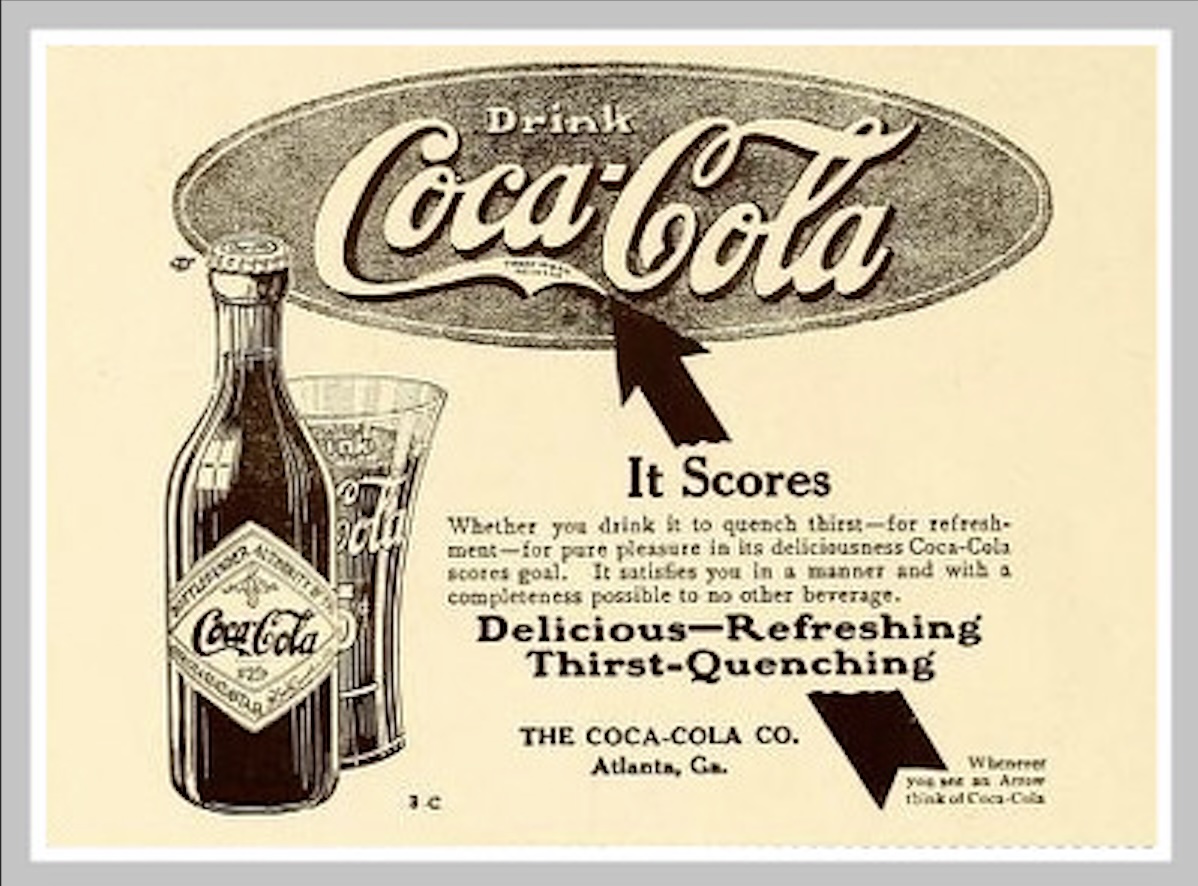
Throughout these changes in how people experienced Coca-Cola, the core promise stayed consistent: refreshment for any moment.
The 1920s: America on the Move
The 1920s brought greater social mobility and urban growth to America. As the nation’s pace quickened, Coca-Cola kept its refreshment promise relevant by connecting it to the era’s new lifestyle patterns.
Coca-Cola saw how Americans were embracing year-round social activities. They responded with “Thirst Knows No Season” in 1922. This simple message broke the link between soft drinks and summer by portraying Coke as an important part of life in all seasons.
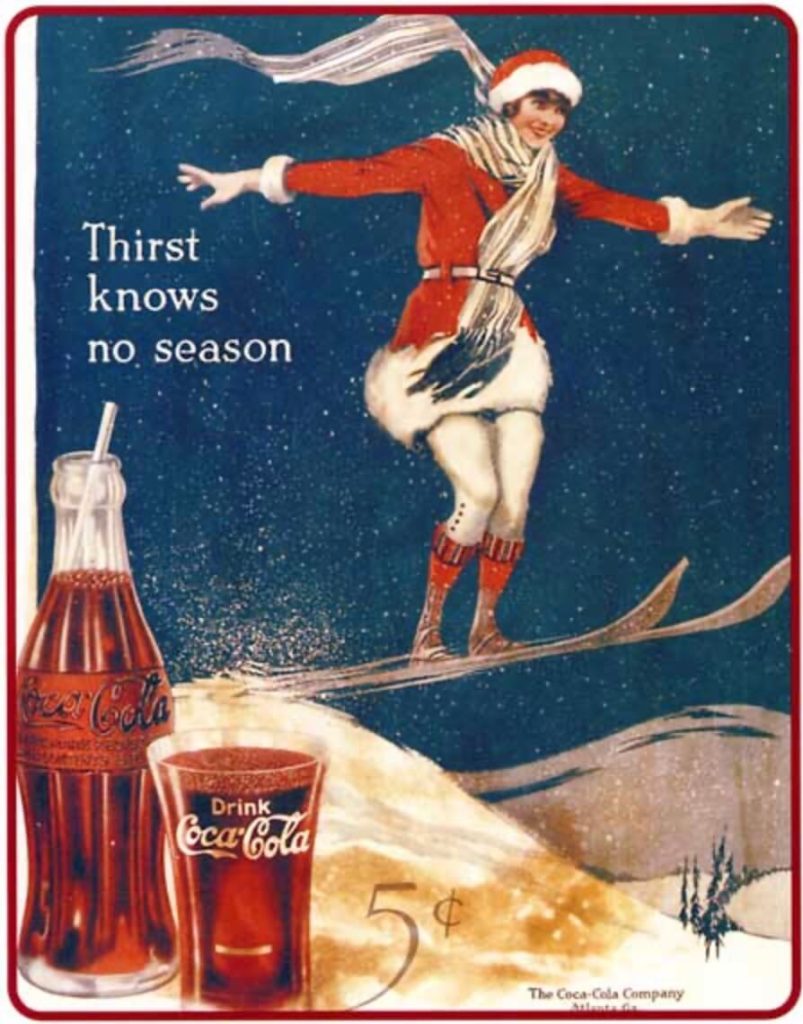
America’s growing mobility inspired “Around the Corner from Everywhere” in 1927. This campaign preserved the refreshment promise while emphasizing accessibility—wherever Americans went in their new automobiles, Coca-Cola would be there to refresh them.
As the decade ended and economic uncertainty grew, “The Pause That Refreshes” (1929) demonstrated Coca-Cola’s ability to sustain its position amid changing circumstances.
The campaign launched just as the Depression began changing American life. A “pause” meant something different now. It offered a moment of relief during hard times. The message worked because it kept Coca-Cola’s core promise while acknowledging new realities.
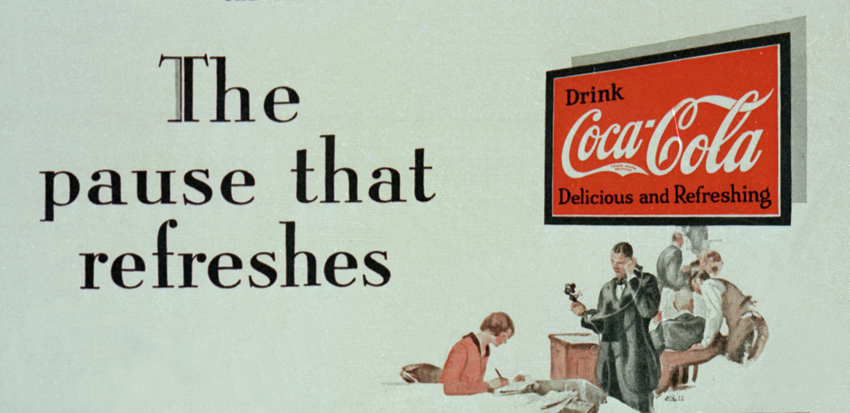
Throughout these transitions from prosperity to hardship, Coca-Cola maintained refreshment as its core benefit. The brand simply evolved how this benefit was expressed—from celebrations of abundance to simple everyday pleasures. This flexibility in sustaining its position helped Coca-Cola remain relevant through dramatic social and economic changes.
1930s-1940s: Comfort in Hard Times, Hope in Wartime
America faced its greatest challenges during these decades – from the depths of the Great Depression to World War II. Coca-Cola demonstrated how a brand could adapt its message while maintaining its core identity. The company evolved from offering affordable comfort during economic hardship to becoming a taste of home for soldiers abroad.
The 1930s: Affordable Comfort in Hard Times
The 1930s brought serious challenges to American life. Coca-Cola sustained its refreshment position by making it relevant to Depression-era values. Affordability, comfort, and simple pleasures when little else was certain.
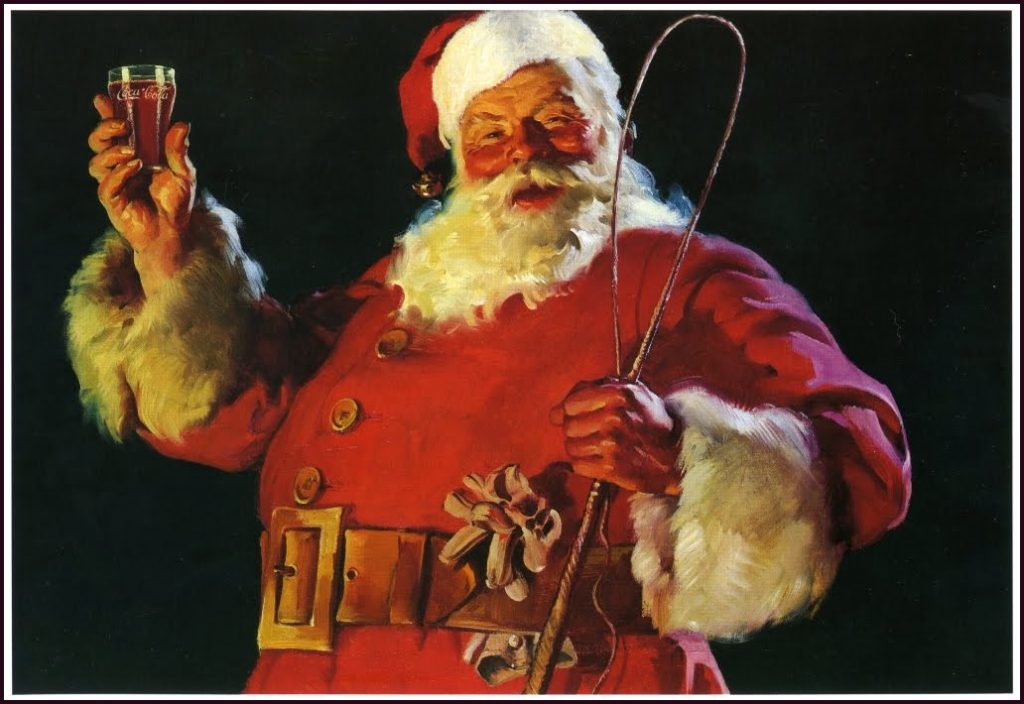
One of Coca-Cola’s most influential brand evolutions was its 1931 reimagining of Santa Claus. Before this, depictions of Santa varied, often showing him as a thin or stern figure. In contrast, Coca-Cola’s Haddon Sundblom illustrations introduced the jolly, red-suited Santa that is widely recognized today. This version aligned with Coca-Cola’s colors and reinforced the brand’s association with holiday joy and family traditions.
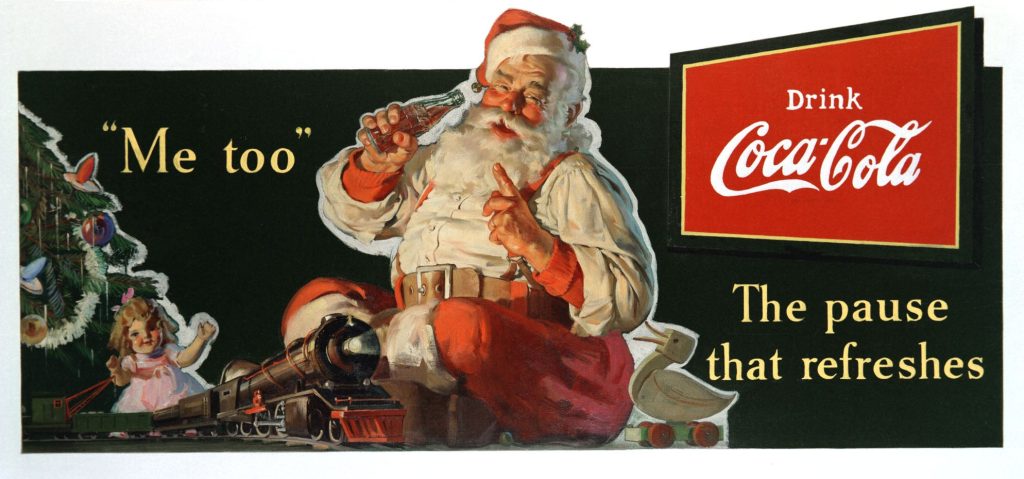
Santa became a defining part of Coke’s holiday marketing and remains vital today. By linking refreshment with warmth, nostalgia, and festive traditions, Coca-Cola positioned itself as an essential part of holiday celebrations worldwide.
While maintaining its five-cent price, the brand emphasized value and accessibility. Slogans like “Ice Cold Sunshine” (1931) and “The Best Friend Thirst Ever Had” (1938) positioned Coca-Cola as an affordable moment of happiness anyone could enjoy.
This period demonstrates how effectively Coca-Cola sustained its brand position by adapting refreshment to match the psychological and economic needs of consumers during challenging times. The brand didn’t change what it was—a refreshing beverage—but found ways to make that refreshment especially meaningful during America’s darkest economic period.
The 1940s: Supporting the War Effort
As America entered World War II, Coca-Cola smoothly shifted its approach again. In 1941, Company President Robert Woodruff declared, “every man in uniform gets a bottle of Coca-Cola for five cents, wherever he is.” This commitment shifted Coca-Cola into being a taste of home for soldiers abroad.
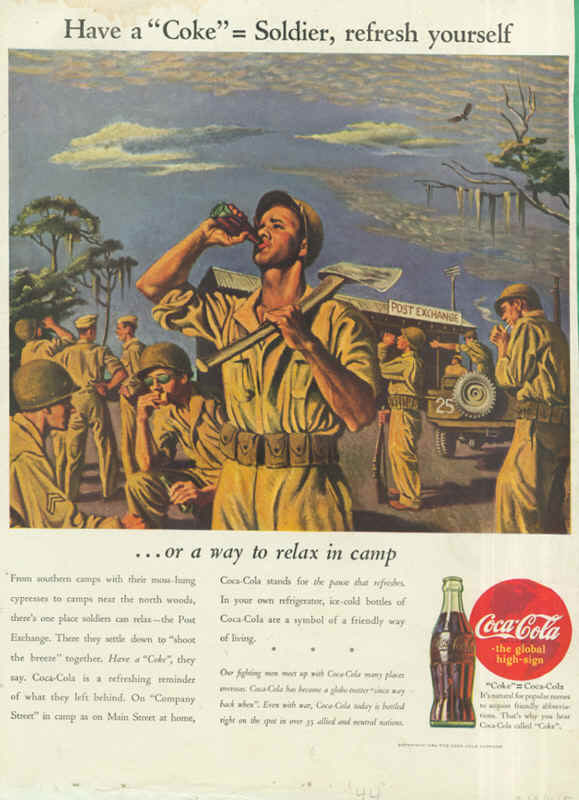
The strategy proved remarkably effective. When General Eisenhower requested 3 million bottles for troops in North Africa, Coca-Cola demonstrated its dedication by sending 148 Technical Observers—nicknamed “Coca-Cola Colonels”—to operate overseas bottling plants.
By war’s end, 64 bottling plants served troops worldwide and more than 5 billion bottles of Coke were consumed by military service personnel during the war. Local people in many areas also experienced Coke for the first time, which helped with post-war expansion.
This wartime initiative not only boosted morale but established Coca-Cola as a patriotic symbol of American comfort and identity, further cementing its position as more than just refreshment, but a cultural touchstone.
1950s–1970s: From Post-War Prosperity to Youth Revolution
These transformative decades saw America move from post-war optimism to cultural revolution. Coca-Cola’s refreshment promise evolved with each era. The brand shifted from celebrating suburban prosperity in the 1950s to embracing youth culture in the 1960s, and finally championing global unity in the 1970s.
The 1950s: The American Dream
The 1950s saw prosperity and optimism in America. As soldiers returned home, started families, and moved to the suburbs, a new vision of the American Dream emerged. Coca-Cola recognized this cultural shift and adapted its refreshment promise to align with these aspirational times.
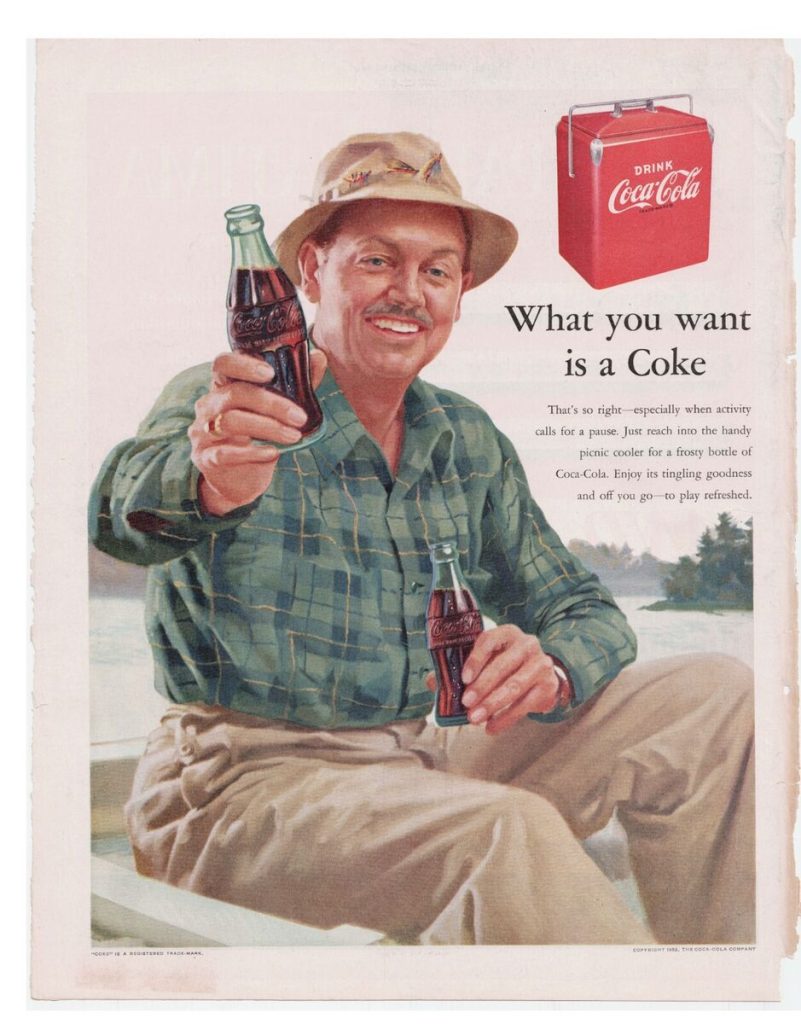
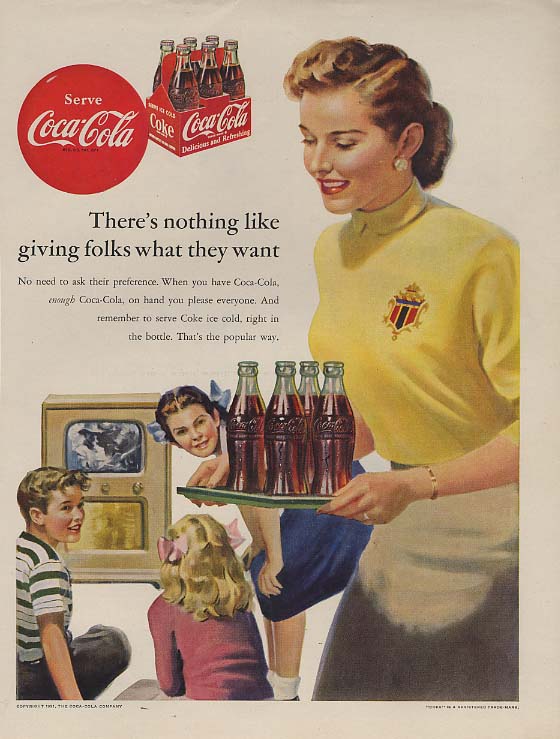
The 1952 slogan “What You Want is a Coke” spoke directly to America’s newfound consumer confidence. Advertisements showed families enjoying backyard barbecues, drive-in movies, and Sunday afternoon picnics. All with Coca-Cola as the centerpiece of these moments. The focus was all about celebrating the small luxuries that defined middle-class success.
The brand also masterfully sustained its brand position by making refreshment an essential part of America’s drive-in movie culture. As families embraced outdoor movie-going as “a fun night out,” Coca-Cola tailored its advertising signs, slogans, and dispensing equipment specifically for these venues. The company created specialized concession displays and even animated film shorts encouraging moviegoers to enjoy an “icy cold Coke” with their popcorn and hot dogs. This strategy perfectly aligned with post-war leisure trends, positioning Coca-Cola as the refreshment of choice during shared family experiences.
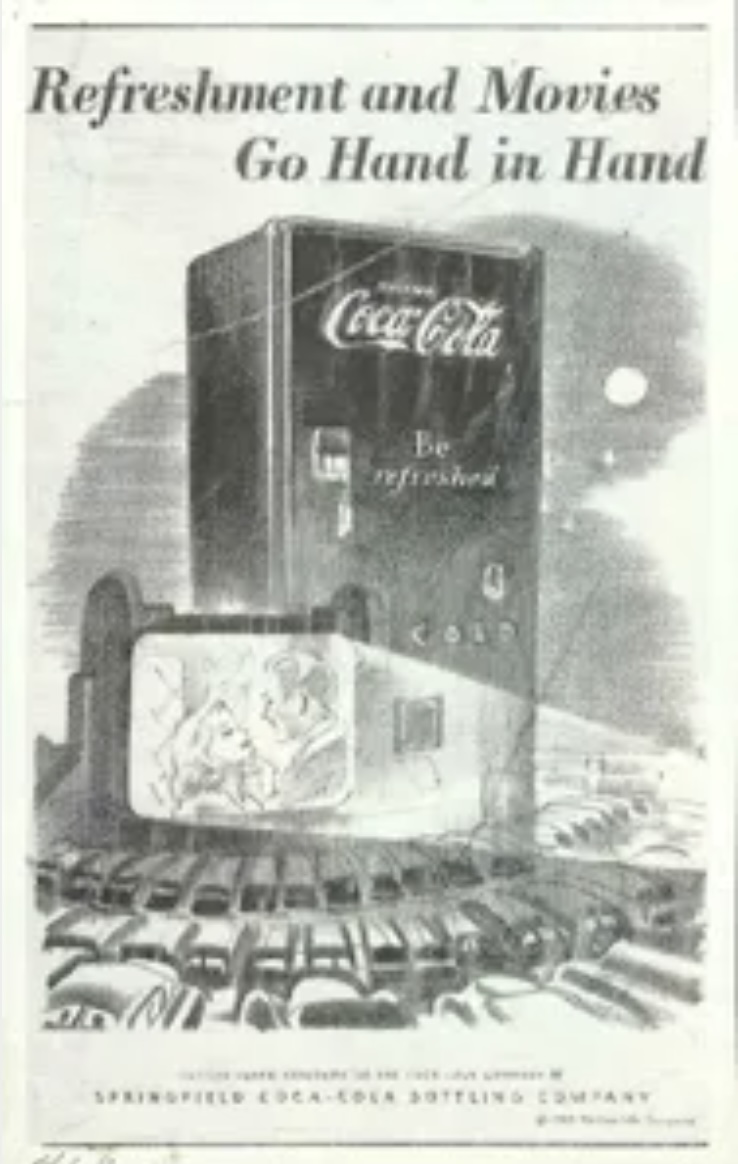
This era demonstrates how effectively Coca-Cola sustained its brand position. While keeping refreshment at its core, the company evolved the context to reflect the optimism and prosperity of post-war America. The brand didn’t change what it offered. It changed how that offer connected to a nation as trends evolved.
The 1960s: The Rise of Youth Culture
Youth rebellion, rock and roll, civil rights, and social movements transformed society in 1960s. Traditional advertising no longer spoke to this new generation seeking authenticity and self-expression.
Coca-Cola recognized it needed to evolve its message for these changing times. The “Things Go Better with Coke” campaign (1963) showed a bold departure from the brand’s more conservative past.
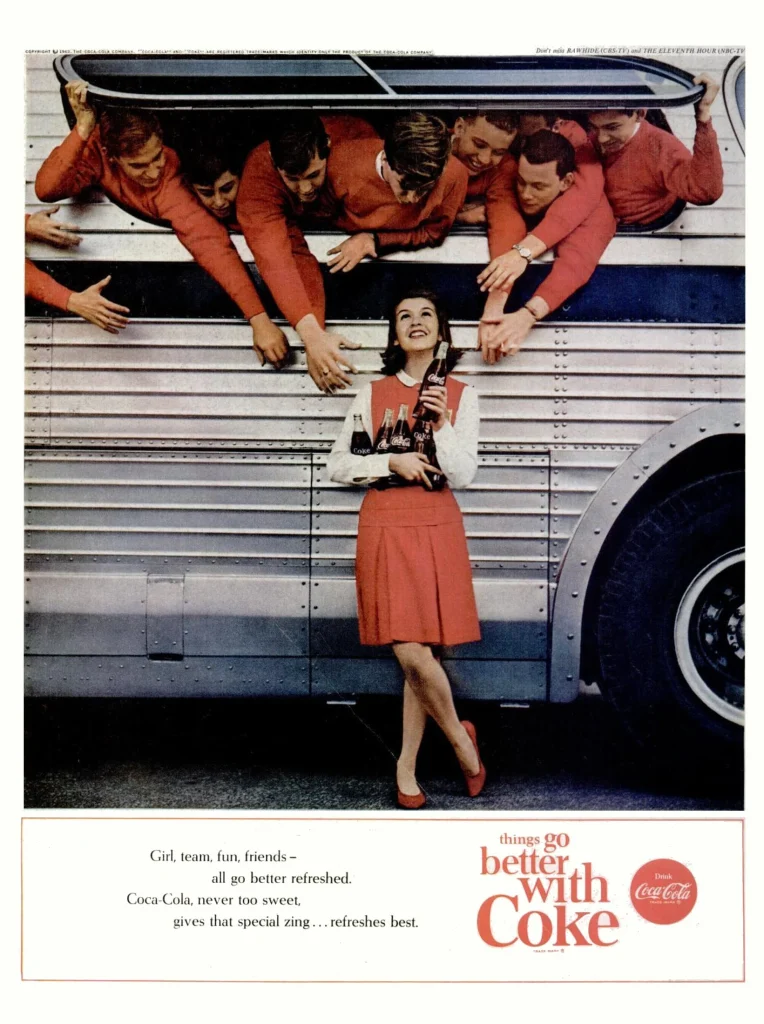
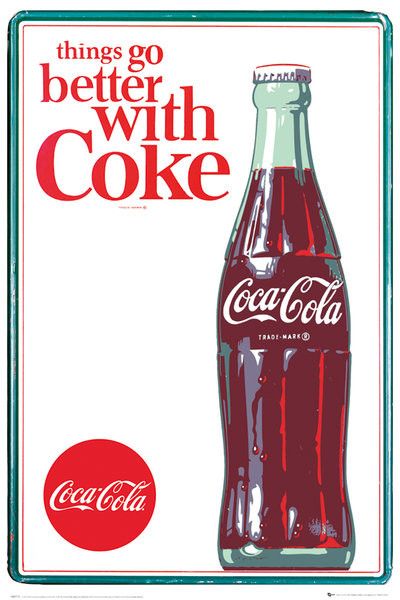
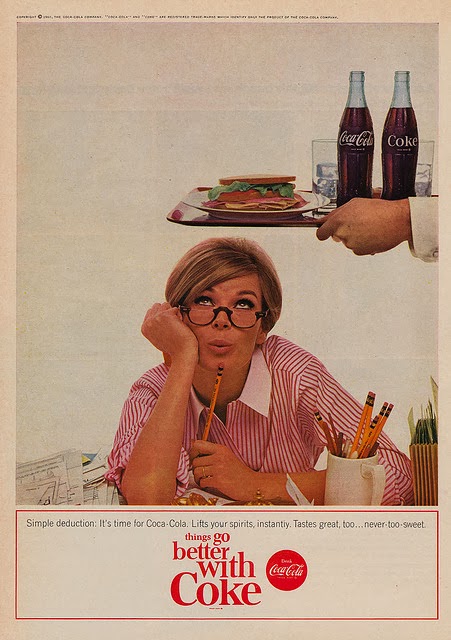
The campaign featured popular music, vibrant visuals, and lively social scenes, emphasizing Coke as the drink of choice for fun, friendship, and spontaneity. The refreshment brand position now had a younger, more energetic and youthful look.
The campaign went beyond typical advertising by fully embracing music as a cultural force. Coca-Cola produced an entire album featuring top artists including Marvin Gaye, Ray Charles, The Who, The Supremes, and more—all singing about Coca-Cola. This elevated the single jingle into a cultural movement with coke at the center of some important musical figures from this time.
Beyond music, the campaign captured the energy of the era. Dynamic commercials showed young people surfing, dancing, and hanging out together. Coca-Cola portrayed it was part of an energetic, liberated lifestyle.
This shift demonstrated how effectively Coca-Cola could sustain its brand position across cultural divides. While keeping refreshment at its core, the company found new ways to make this promise relevant to a generation redefining American values. By translating refreshment into the language and aesthetics of youth culture, Coca-Cola proved its position could remain strong even during times of dramatic social change.
The 1970s: Unity, Authenticity, and Cultural Relevance
The 1970s saw an increasing consumer demand for authenticity and social change. Coca-Cola responded by reinforcing its core brand promise of refreshment with themes of togetherness. It adapted its marketing to align with youth culture, global unity, and a push for real, meaningful experiences. This birthed some of the brand’s best work.
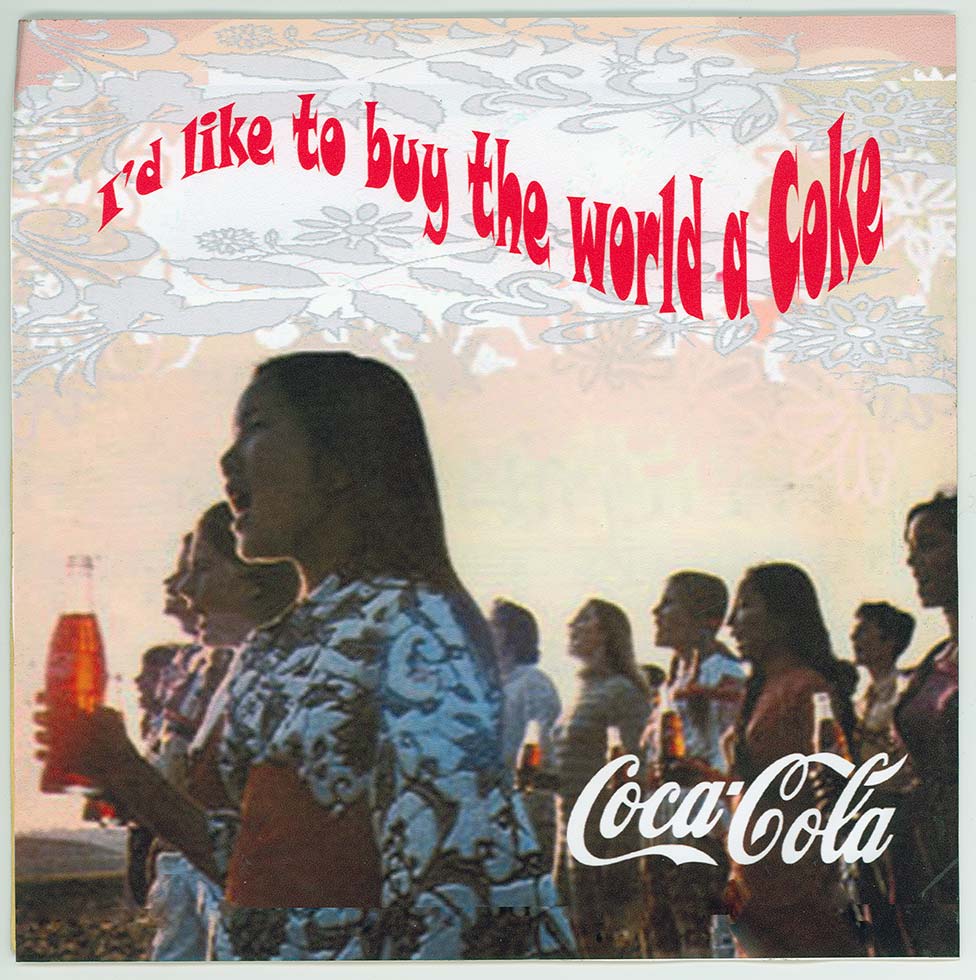
Coca-Cola’s most defining campaign of the 1970s was “It’s the Real Thing,” a campaign introduced in 1969 but fully realized in the 1970s. With it, Coca-Cola positioned itself as an original and authentic choice. This messaging resonated deeply in an era when young people were challenging traditional institutions and demanding honesty and transparency from brands.
The most iconic moment of the campaign came in 1971 with the release of the famous “Hilltop” commercial. Filmed on a hillside in Italy, the ad featured a diverse group of young people singing “I’d Like to Buy the World a Coke.” A song that was conceived by Bill Backer, a McCann Erickson exec, and songwriters Roger Cook, Roger Greenaway, and Billy Davis.
The Hilltop commercial was a perfect reflection of the era’s idealism and global unity, themes that were central to youth culture in the post-1960s world. At a time when the Vietnam War, civil rights movements, and global unrest dominated headlines, Coca-Cola’s message of peace and togetherness was a powerful cultural touchstone.
The Hilltop ad became a cultural moment. It connected Coca-Cola to a vision of a better world, reinforcing its brand as a symbol of optimism. The ad’s popularity led to its jingle being expanded into a full-length song, “I’d Like to Teach the World to Sing,” which became a global hit.
The 1970s revealed Coca-Cola at its adaptable best. By connecting a cold bottle of Coke to visions of world peace and genuine connection, Coca-Cola showed how it could elevate a brand beyond its physical product. This decade set new standards for how brands could maintain their core identity while embracing meaningful social change.
1980s–1990s: Finding Authenticity in a Changing World
The close of the 20th century brought new challenges as consumer tastes and media landscapes evolved rapidly. Coca-Cola learned valuable lessons about staying true to its core identity while connecting with new generations. From the New Coke episode to global expansion, these decades proved that authentic evolution beats chasing trends.
The 1980s: Finding Its Voice in a New Generation
The 1980s brought Coca-Cola face-to-face with challenges amid changing times. While Pepsi captured the youth market with celebrity endorsements from Michael Jackson, Madonna, and Michael J. Fox, Coca-Cola’s market share was slipping.
By 1985, Pepsi held 31.4% of the soft drink market, dangerously close to Coca-Cola’s 36.8%. The brand’s iconic red-and-white logo and glass bottle, once symbols of American culture, now seemed old-fashioned to teenagers who saw Coke as “something their parents drank.”
In a dramatic attempt to reverse this trend, Coca-Cola made a bold decision and major blunder: change its 99-year-old formula. In 1985, “New Coke” was born in response to the Pepsi Challenge, but the public reaction was swift and fierce.
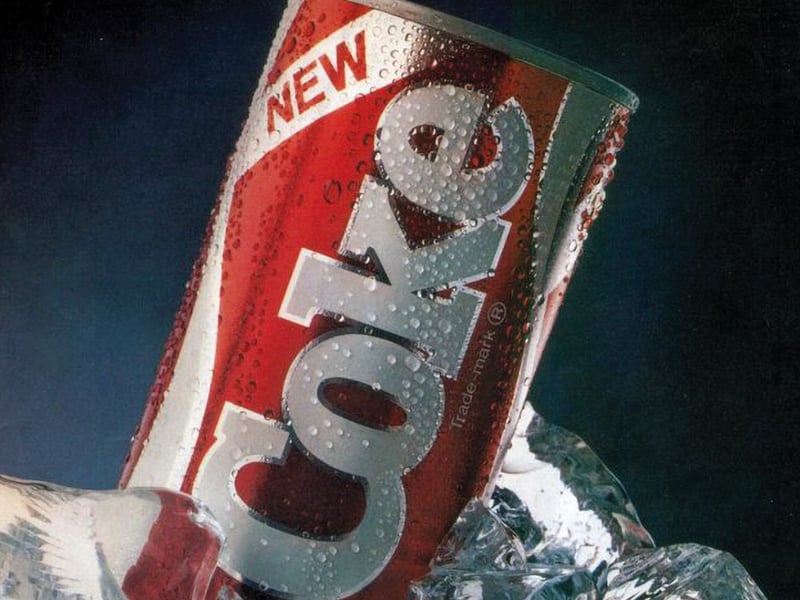
Loyal customers demanded the return of the original formula, and within just 79 days, Coca-Cola reintroduced “Coca-Cola Classic.” This misstep revealed something crucial. People loved Coca-Cola’s taste and had a deep emotional connection to what the brand represented.
Learning from this experience, Coca-Cola refocused on its authentic identity and leaned in to its brand positioning in a new way.
The “You Can’t Beat The Feeling” campaign in 1988 marked this turning point. Created by McCann-Erickson and directed by Ridley Scott, the campaign showed scenes from everyday life in a way that looked like scenes from Ferris Bueller’s Day Off. Friends hanging out, eating pizza, skateboarding, making music, and goofing around. All while sharing a Coke of course.
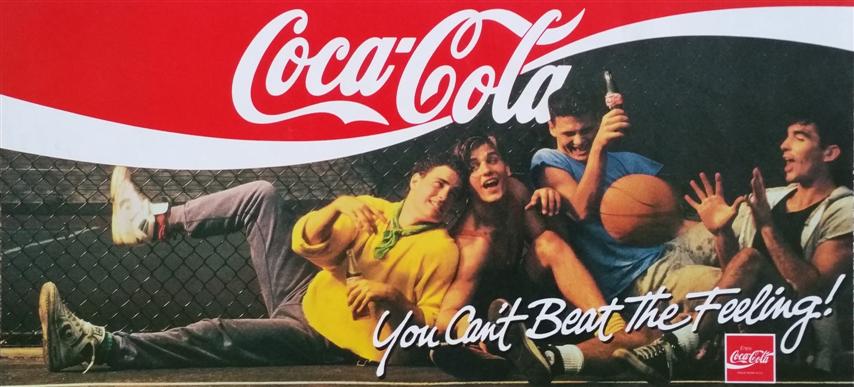
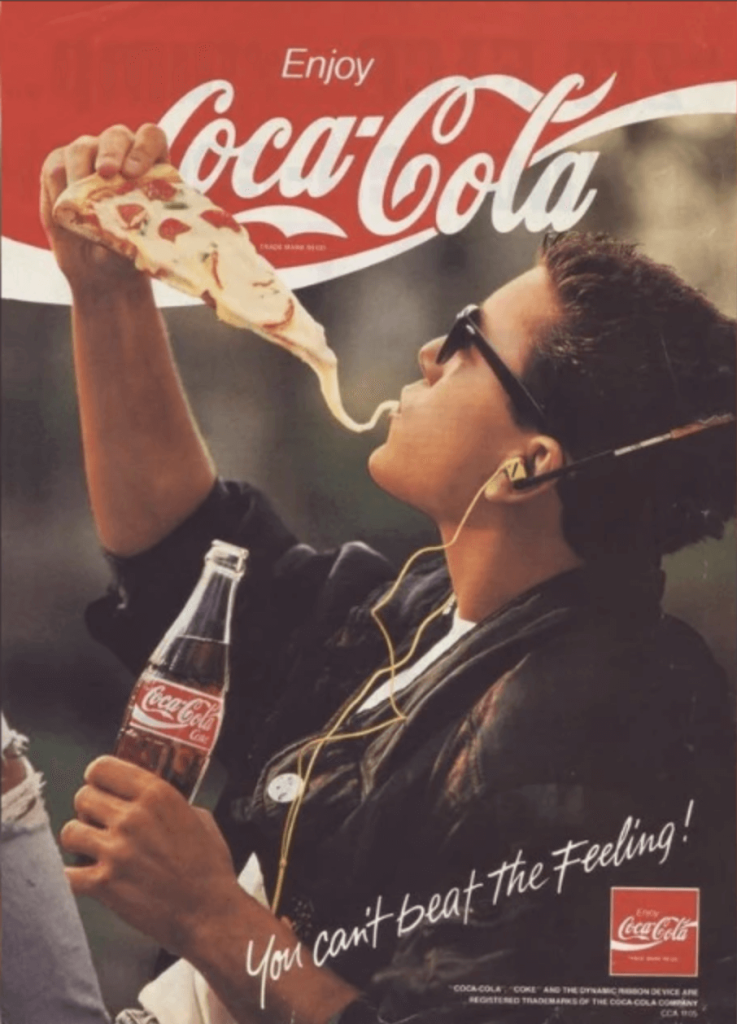
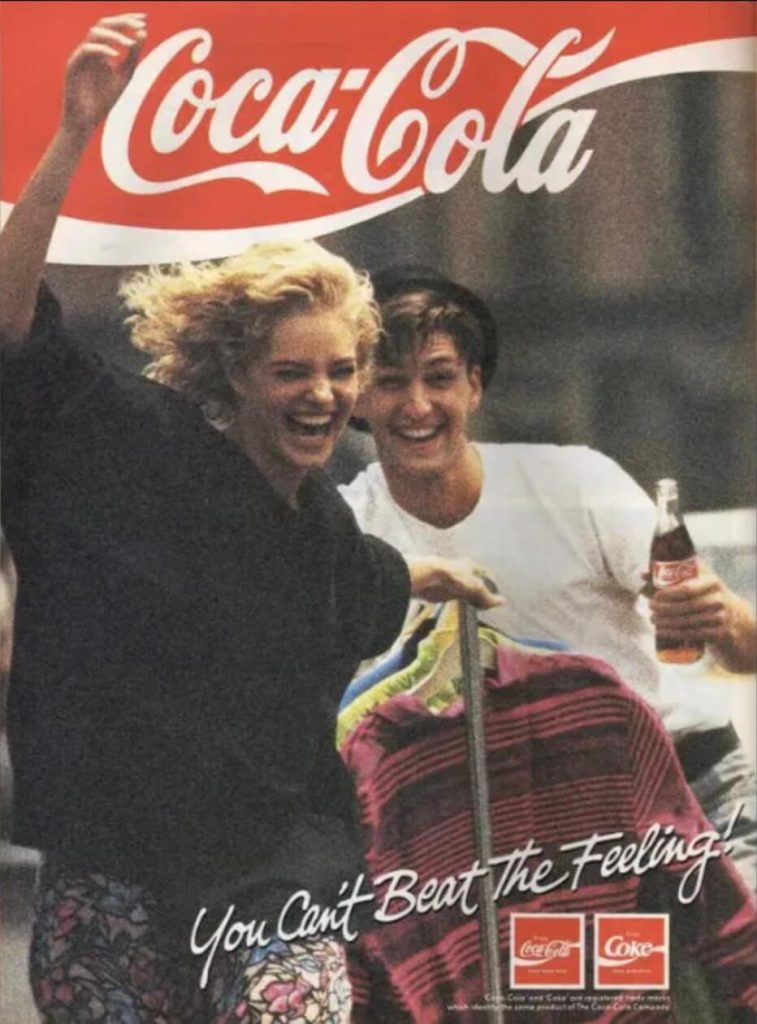
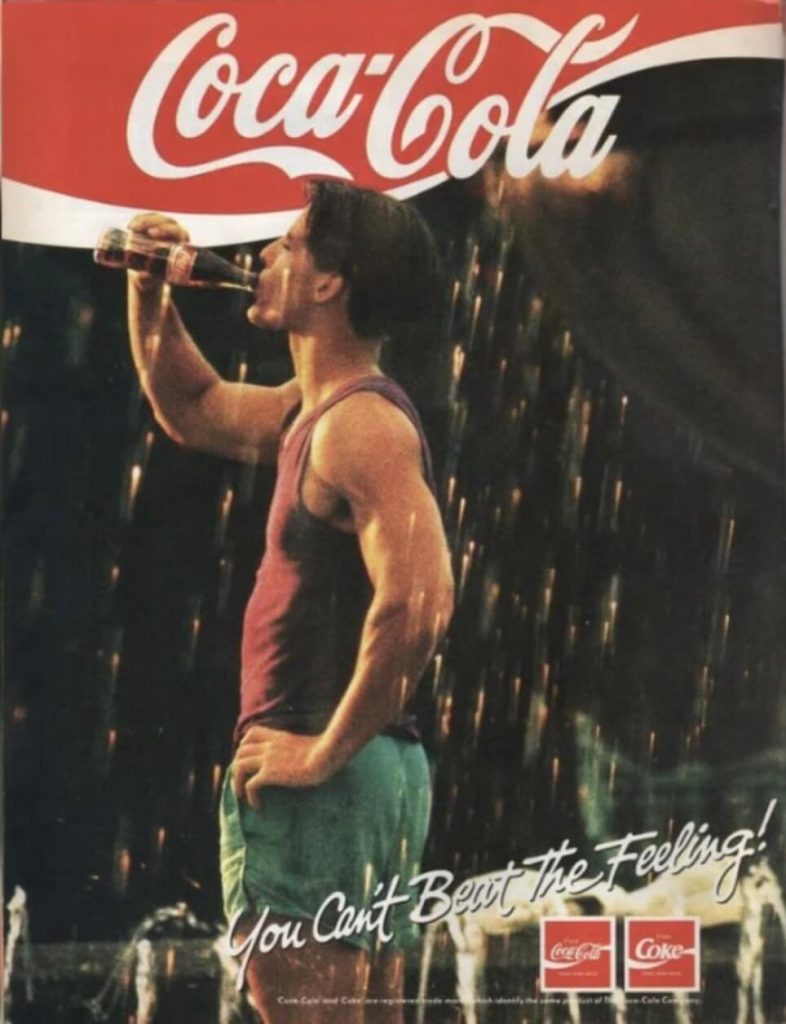
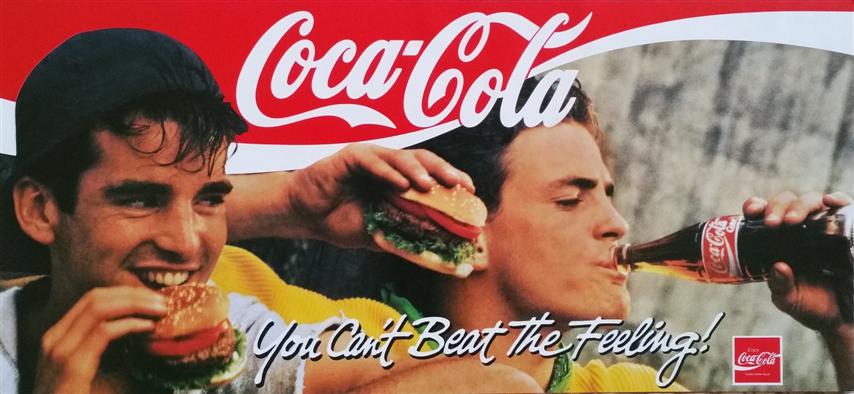
Market research had revealed that people drank Coke to celebrate good moments, and the fizz and taste triggered happy memories. Most importantly, younger buyers wanted authenticity, not just tradition.
The campaign reached 27 countries, with local musicians adapting the theme song for each market. By 1989, teenagers ranked Coke as their favorite soft drink. Coke’s amazing turnaround proved the brand could find authentic ways to connect their core promise to contemporary culture, rather than chasing trends at the expense of their identity.
The 1990s: Global Expansion and Emotional Branding
The lessons learned in the 1980s created strong tailwinds for Coca-Cola as it entered the 1990s. Having rediscovered the power of its original formula and authentic positioning, the company now had a clear blueprint for sustaining its brand position.
The decade began with the confident “You Can’t Beat the Real Thing” campaign. This slogan directly celebrated Coca-Cola’s authenticity and original taste, reinforcing what made the brand special to generations of consumers. It was a recommitment to the promise that had defined the brand for over a century.
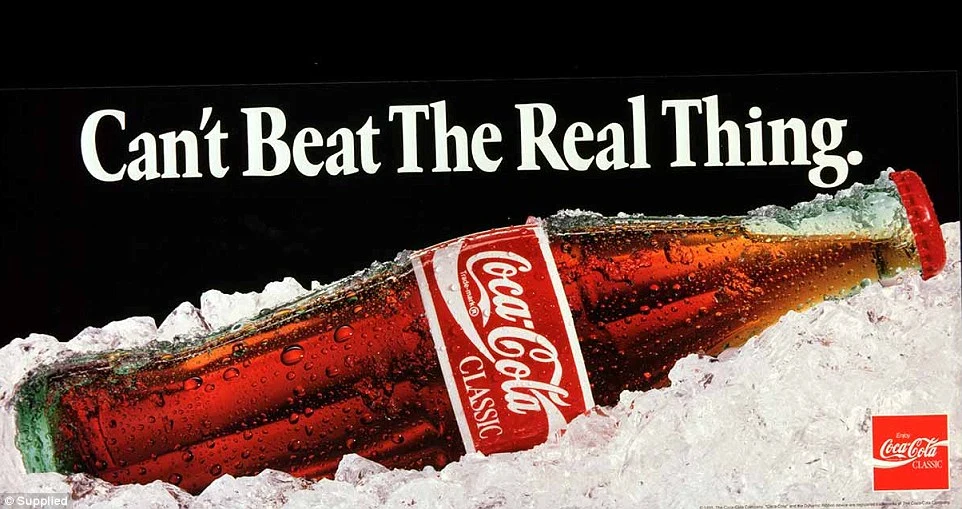
In 1993, Coca-Cola evolved this approach with the landmark “Always Coca-Cola” campaign. Rather than changing its position, the company found fresh ways to express refreshment through imaginative storytelling. A memorable jingle and the beloved animated polar bears in the “Northern Lights” commercial created an emotional connection that transcended age and cultural barriers. These characters perfectly embodied Coca-Cola’s warmth and universal appeal while making refreshment relevant to contemporary audiences.
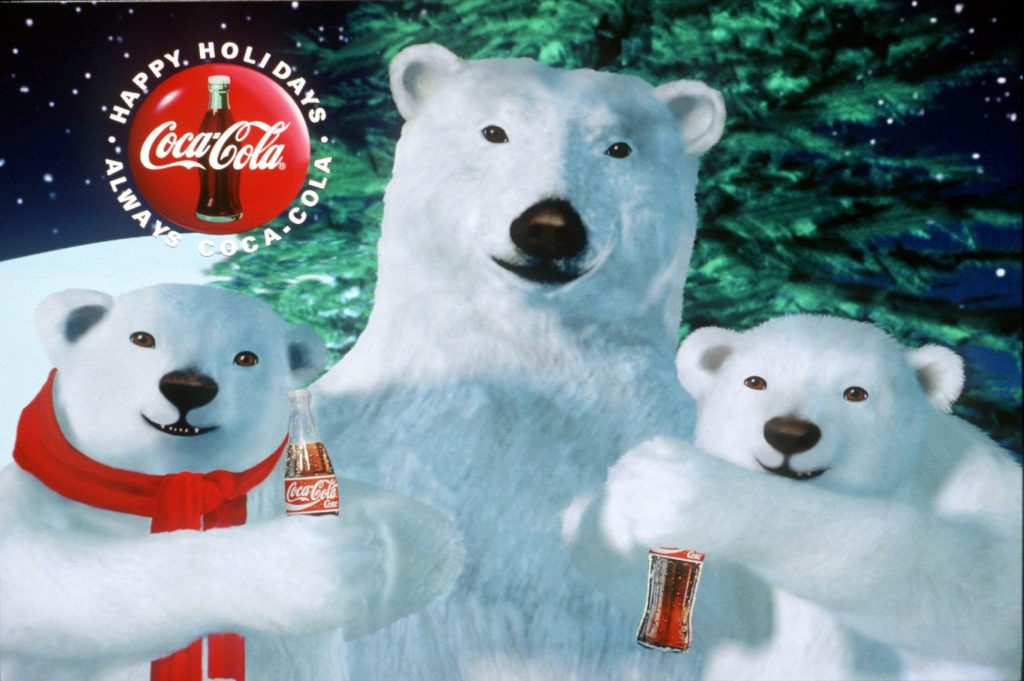
Throughout the decade, Coca-Cola sustained its position by maintaining its focus on refreshment while creatively adapting how this benefit was communicated. This balance of consistency and innovation allowed Coca-Cola to strengthen its connection with consumers across generations, proving that a well-established brand position becomes more powerful when it evolves authentically rather than changing fundamentally.
2000s–Today: Personalization and Digital Integration
The dawn of social media, smartphones, and digital culture transformed how people connect and share experiences. Coca-Cola responded by reimagining its refreshment promise for this new era. As conversations moved online and experiences became instantly shareable, the brand found innovative ways to make its century-old promise of refreshment meaningful in both physical and digital spaces.
The 2000s: Refreshment and Happiness in a Digital World
The 2000s marked a significant shift in how people connected and consumed media. As digital technology transformed daily life, Coca-Cola evolved its refreshment promise for an increasingly online world. The brand’s journey from “Life Tastes Good” (2001) to “Open Happiness” (2009) shows how it sustained its core position while adapting to new definitions of connection.
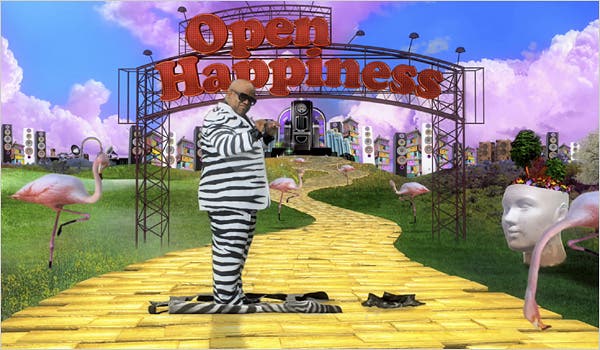
“Open Happiness” (2009) perfectly demonstrated this ability to maintain brand consistency during cultural change. Launched during the global financial crisis, this campaign elevated Coca-Cola’s refreshment benefit into an invitation to find joy in simple moments. The timing was perfect – as people faced economic uncertainty, Coca-Cola wasn’t just selling a drink; it was offering an accessible moment of happiness that anyone could afford.
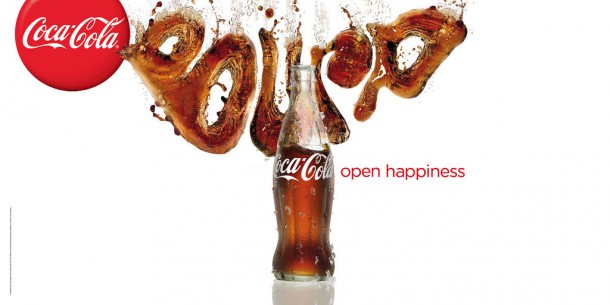
Digital innovation amplified this core message. Coca-Cola became one of the first global brands to embrace social media storytelling and user-generated content. Interactive campaigns encouraged people to share their own “happiness” moments online, turning personal experiences into shared celebrations. Major sponsorships of the Olympics and FIFA World Cup extended this message of shared happiness to global audiences.
This era shows how a strong brand position can thrive across changing media landscapes. While Coca-Cola’s core promise of refreshment remained unchanged, the brand found new ways to make this benefit relevant in a world where connections increasingly happened through screens. By linking physical refreshment with digital sharing, Coca-Cola sustained its position as a catalyst for joy and connection across both real and virtual worlds.
The 2010s: Personalization
The 2010s brought a cultural shift toward personalization and individual expression, powered by social media and smartphones. Coca-Cola responded with perhaps its most innovative interpretation of refreshment yet: the “Share a Coke” campaign in 2011. By replacing its iconic logo with popular names, Coca-Cola transformed its bottles from mass-produced products into personal connections.
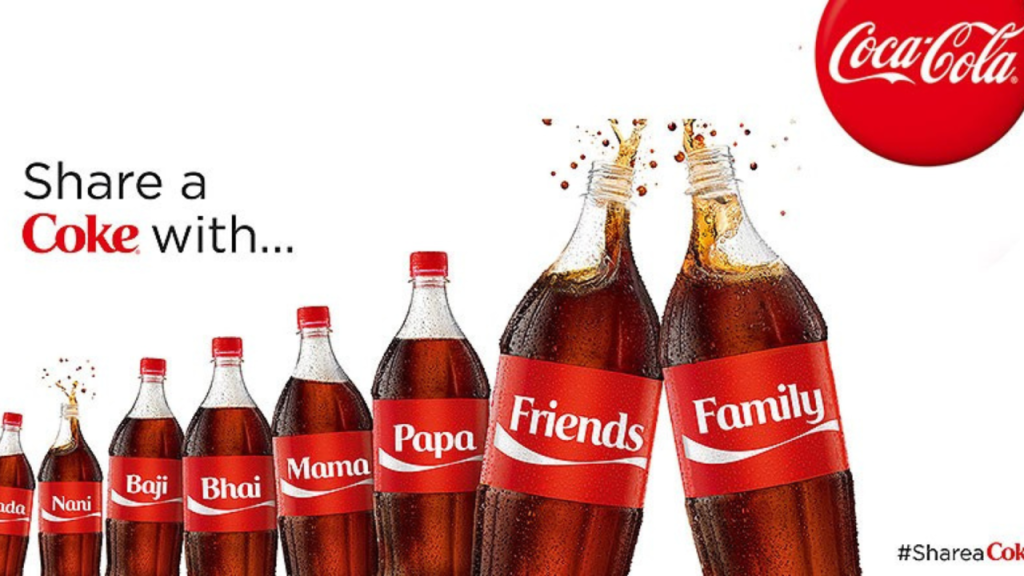
This campaign brilliantly demonstrated how to sustain a brand position in changing times. While maintaining its core promise of refreshment and togetherness, Coca-Cola adapted to an era where consumers craved both personalization and shareable moments. People didn’t just buy a Coke anymore – they hunted for their names or their friends’ names, turning refreshment into a social treasure hunt. When they found “their” bottle, they naturally shared it on social media, creating a perfect blend of physical product and digital engagement.
The campaign’s success went beyond clever marketing. It showed how Coca-Cola could make its century-old refreshment promise relevant to a generation that valued personal expression and authentic connections. The simple act of sharing a Coke became more meaningful when the bottle itself carried a personal message. By 2020, over a billion personalized bottles had been sold, proving that sustaining a brand position doesn’t mean standing still—it means finding fresh ways to make your core benefit matter to contemporary consumers.
2020s–Present: A Purpose-Driven Approach
In the 2020s, The Coca-Cola Company has embraced a purpose-driven approach, encapsulated in its mission to “Refresh the World. Make a Difference.” This commitment is evident through strategic initiatives that focus on both delivering refreshment and fostering positive global impact.
Refreshing the World
In 2021, Coca-Cola unveiled its “Real Magic” brand platform. This is the first new global philosophy since “Taste the Feeling” in 2016. It shows how Coca-Cola sustains its refreshment position for today’s world. “Real Magic” celebrates moments when virtual and physical worlds blend together.
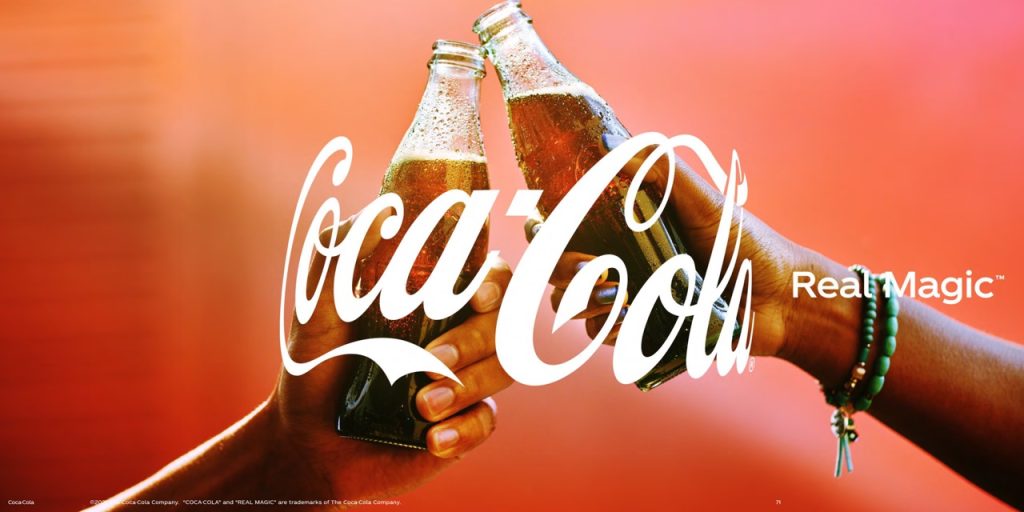
The “Hug” logo visually reinforces this philosophy of connection. It features a curved Coca-Cola trademark that embraces content within it. Through campaigns like “One Coke Away From Each Other,” Coca-Cola maintains its promise to unite people. It adapts this promise to fit contemporary digital experiences.
Kate Miller, marketing director for Coca-Cola South Pacific, explained the approach: “The Real Magic philosophy believes differences make the world more interesting.” This strategy allows Coca-Cola to sustain its position as a brand that refreshes both physically and emotionally. It adapts to how people connect in an increasingly digital world.
And with this message, Coca-Cola continues to captivate consumers with innovative advertising and storytelling that highlight the joy and unity associated with its beverages. A recent example—published January 22, 2025—is the “Westside’s Finest“ campaign, a short film directed by Kenya Barris, which traverses 50 years of Coca-Cola’s beverage history through the lens of a family-run convenience store. By blending nostalgia with modern storytelling techniques, Coca-Cola reinforces its brand evolution over decades and it’s enduring presence in our lives.
In addition to traditional advertising, Coca-Cola has ventured into experiential marketing to engage consumers directly. For instance, the “We All Scream for Orange Cream“ campaign introduced a new Orange Cream flavor by deploying an ice cream truck-themed activation. Set to Mariah Carey’s “Fantasy,” the campaign featured a 30-second spot showcasing a neighborhood’s enthusiastic response to the new flavor, emphasizing the brand’s ability to create memorable, shared experiences.
In response to evolving preferences, particularly among health-conscious demographics, the Coca-Cola Company has diversified its product portfolio. The introduction of Simply Pop, a prebiotic soda line, exemplifies this strategy. These beverages, available in flavors like Strawberry and Pineapple Mango, are formulated with prebiotic fiber to support gut health, catering to consumers seeking functional and enjoyable drink options.
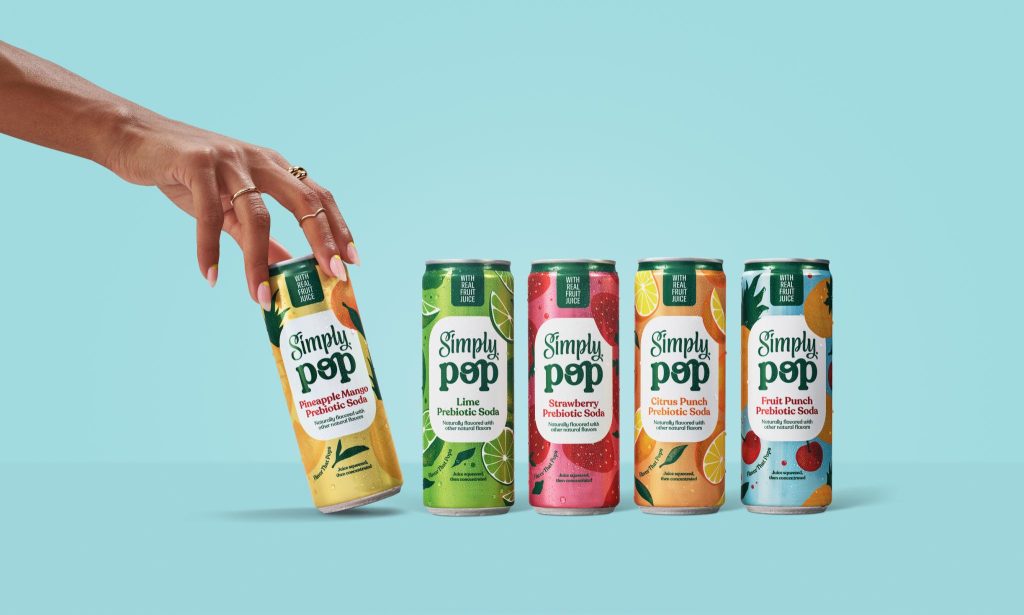
Making a Difference
The “World Without Waste” initiative represents perhaps the most significant expansion of Coca-Cola’s refreshment promise. By aiming to collect and recycle a bottle for every one sold by 2030, the company acknowledges that true refreshment can’t come at the planet’s expense. This initiative sustains Coca-Cola’s brand position by ensuring its refreshment promise remains relevant in an environmentally conscious world.
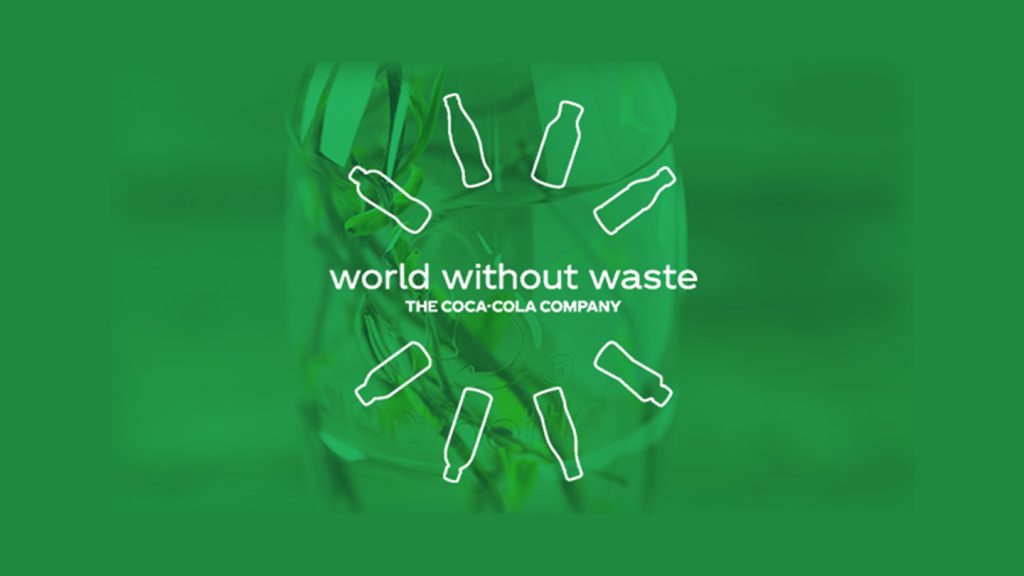
Through storytelling that bridges generations, products that balance enjoyment with wellness, and initiatives that connect refreshment to responsibility, Coca-Cola continues to sustain its core brand position. The company proves that a 137-year-old refreshment promise can still resonate when it evolves to reflect contemporary values.
Refreshing the Future: Lessons from Coca-Cola’s Journey
Coca-Cola’s journey from pharmacy tonic to global icon reveals how powerful brand position sustainability can be when executed thoughtfully. Over 137 years, the brand has faced countless challenges—from the Great Depression to digital transformation. Yet through each era, Coca-Cola has successfully adapted by understanding two key principles.
First, sustaining a brand position means distinguishing between your core benefit and how you express it. Coca-Cola’s fundamental promise of refreshment hasn’t changed since 1886. But how they deliver that refreshment has evolved with each generation’s unique needs and preferences.
Second, successful brand longevity requires deep cultural understanding, not just trend-chasing. Coca-Cola connected with soldiers during World War II. They celebrated prosperity in the 1950s. They promoted global unity in the 1970s. Each approach authentically linked refreshment to contemporary life.
Today, Coca-Cola embraces sustainability initiatives and adapts to health-conscious consumers while keeping refreshment at its core. The brand demonstrates that sustaining a position requires more than staying current. It’s about making your timeless promise meaningful to new generations in authentic, relevant ways.
